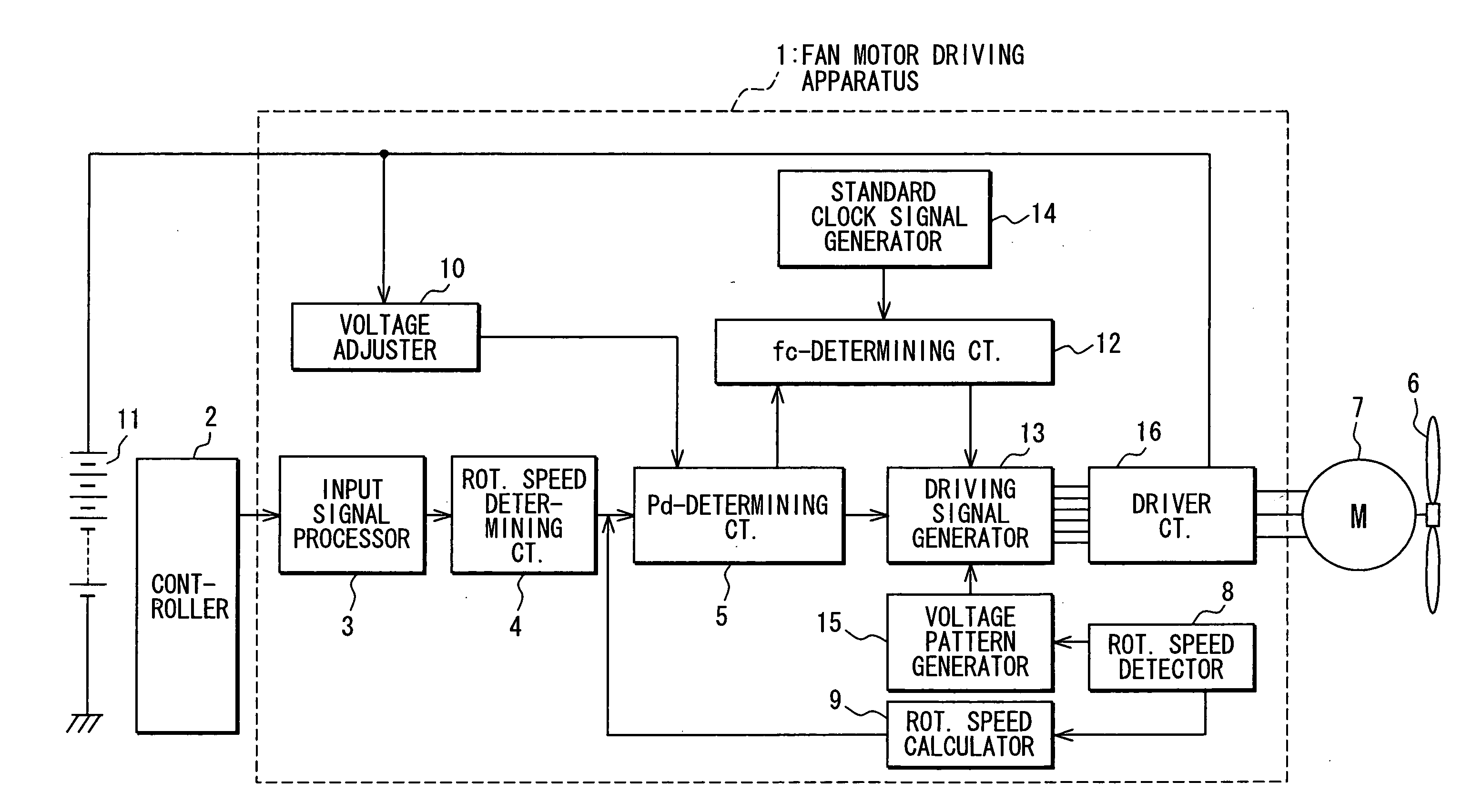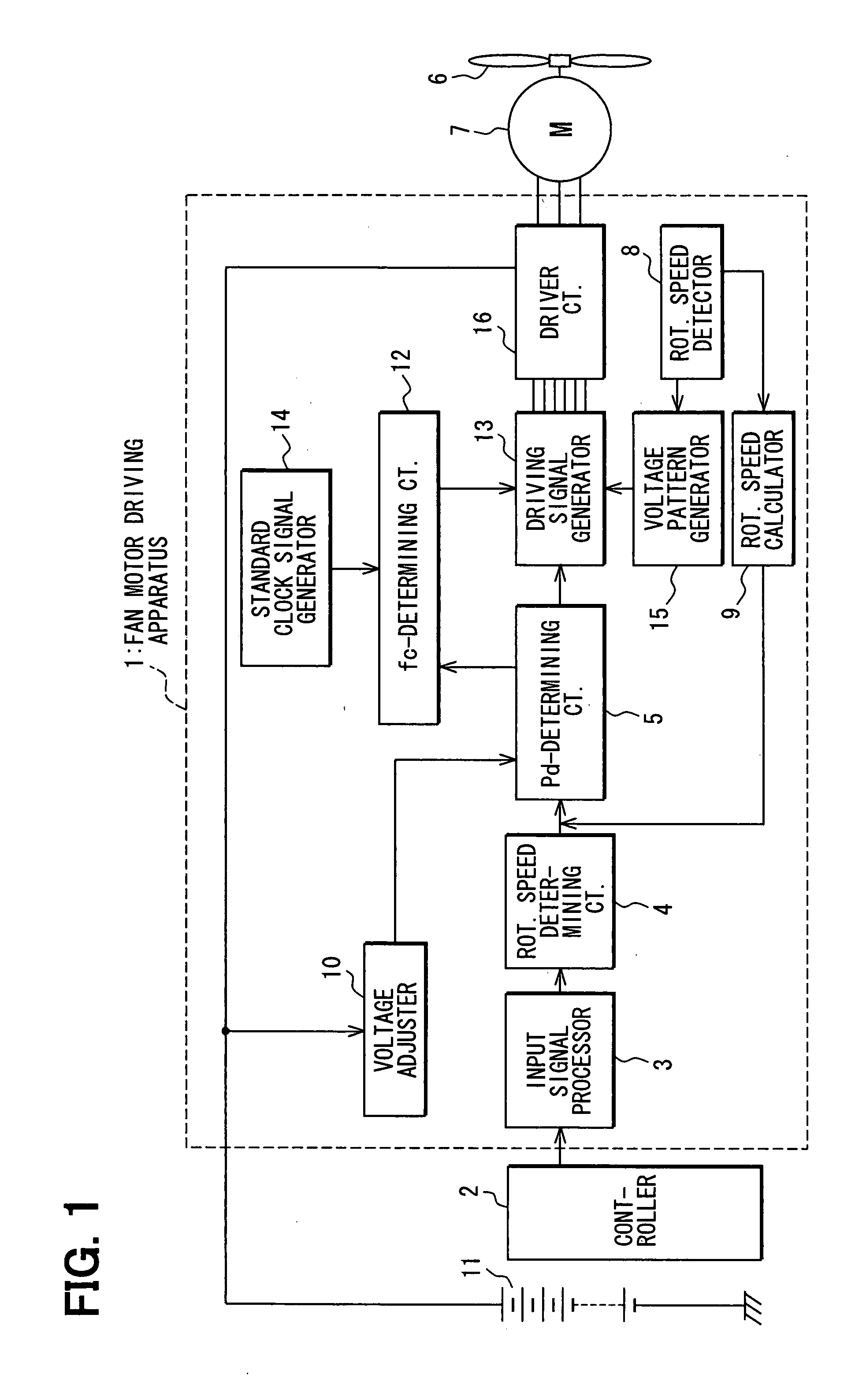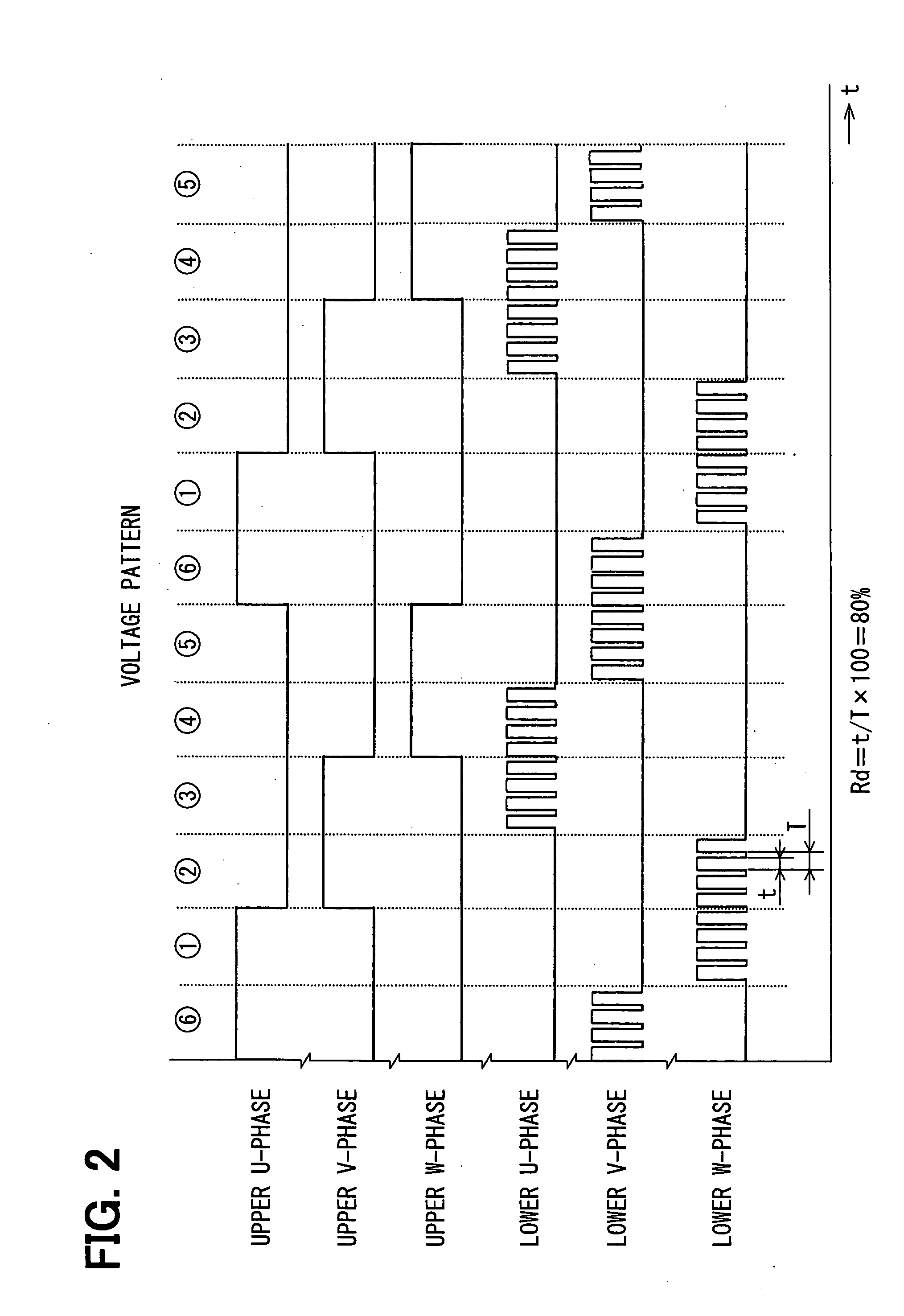Method of driving fan motor
a fan motor and motor technology, applied in the direction of motor/generator/converter stopper, electronic commutator, dynamo-electric converter control, etc., can solve the problems of high switching loss in semiconductor elements such as mosfets, and achieve linear and continuous reduction of carrier frequency, reduce switching loss in semiconductor elements, and suppress driving noise
- Summary
- Abstract
- Description
- Claims
- Application Information
AI Technical Summary
Benefits of technology
Problems solved by technology
Method used
Image
Examples
first embodiment
[0026]the present invention will be described with reference to FIGS. 1-8. First, referring to FIG. 1, an entire structure of a fan motor driving apparatus will be described. The driving apparatus 1 is powered by a battery 11, and supplies power to a three-phase brushless DC motor 7 that drives a fan 6. A controller 2 such as an electronic control unit (ECU) feeds a speed command (a command as to rotational speed of the motor 7) to an input signal processor 3 in the driving apparatus 1 as a PWM (Pulse Width Modulation) signal. The input signal processor 3 converts a duty ratio Rd included in the PWM signal into a duty ratio voltage Vd that represents the duty ratio Rd. The duty ratio voltage Vd is fed to a rotational speed determining circuit 4. The controller 2 outputs the speed command based on a signal, such as a water temperature in a radiator fed from a temperature sensor.
[0027]The rotational speed determining circuit 4 determines a rotational speed signal based on the duty rat...
second embodiment
[0037]the present invention is shown in FIGS. 9 and 11. In the second embodiment, the carrier frequency is stepwise reduced to fmin after the rotational speed of the motor 7 has reached the marginal speed Nm (corresponding to the marginal output duty Pdm). FIG. 9 shows a case where the carrier frequency fc is reduced to fmin in three steps. The stepwise reduction of the carrier frequency is realized, for example, in a circuit shown in FIG. 11 (though the carrier frequency is reduced in two steps in this example). In the circuit shown in FIG. 11, the carrier frequency is switched by changing a time constant of CR in a triangle wave generator 31 according to the output duty Pd. Other structures and functions are the same as those in the first embodiment.
[0038]A third embodiment of the present invention is shown in FIGS. 10 and 12. In the third embodiment, the carrier frequency is linearly and continuously reduced to the minimum carrier frequency fmin after the rotational speed N of th...
PUM
 Login to View More
Login to View More Abstract
Description
Claims
Application Information
 Login to View More
Login to View More - R&D
- Intellectual Property
- Life Sciences
- Materials
- Tech Scout
- Unparalleled Data Quality
- Higher Quality Content
- 60% Fewer Hallucinations
Browse by: Latest US Patents, China's latest patents, Technical Efficacy Thesaurus, Application Domain, Technology Topic, Popular Technical Reports.
© 2025 PatSnap. All rights reserved.Legal|Privacy policy|Modern Slavery Act Transparency Statement|Sitemap|About US| Contact US: help@patsnap.com



